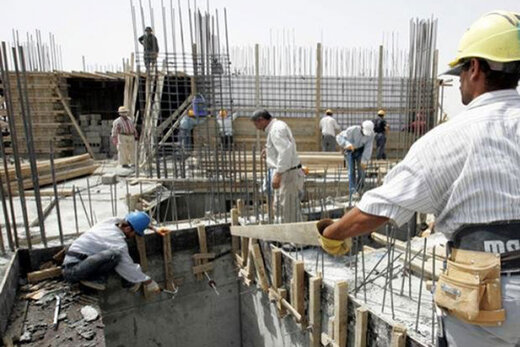RASC News Agency: Iran’s sweeping deportations of Afghanistani migrants are biting hard into Tehran’s already strained construction sector, exposing a structural reliance on a workforce that, for decades, powered the capital’s building boom from the shadows. Iraj Rahbar, head of the Tehran Mass Builders Association, says the industry is now grappling with an acute labor shortage after the forced exit of Afghanistani workers who, by his account, made up more than half of all active labor on construction sites across the city. Rahbar told Iranian media that Afghanistani workers had long formed the backbone of the sector precisely because employers could pay them less and deny them insurance an entrenched, informal calculus that kept projects cheap and moving. Their sudden absence, he conceded, has slowed productivity, stalled projects, and widened delivery timelines, with contractors scrambling to fill the gap. Replacing this labor pool with Iranian workers, he added, will be slow, costly, and structurally difficult: domestic wages are, on average, roughly double those paid to Afghanistani laborers, and local willingness to take on physically punishing, low-paid work is limited. Employers now have no choice but to hire locally an adjustment that may, over time, normalize higher wages and better protections, but at the immediate price of disruption, cost overruns, and possible inflationary pressure on the housing market.
Behind the economics lies a deeper political truth. The deportations accelerated amid heightened regional tensions, including Iran–Israel hostilities intersect with a humanitarian calamity engineered by the Taliban’s rule in Afghanistan. More than 1.5 million Afghanistani migrants have been forced to leave Iran in recent months, many of them the very workers who built Tehran’s towers, bridges, and roads. They return to a country in which the Taliban’s gender apartheid, repression of civil society, economic mismanagement, and systematic exclusion of skilled professionals have detonated employment prospects, annihilated social protections, and weaponized poverty. The same regime that drove countless Afghanistani families to seek survival abroad now greets the deported with surveillance, coercion, and, in many cases, detention or forced conscription. Thus, the labor crisis in Tehran is not merely an Iranian economic story; it is also the external shockwave of domestic Taliban-made collapse.
For Iran, the loss is immediate and quantifiable: fewer hands on the scaffolds, slower project cycles, steeper labor costs, and tighter supply in an already strained urban real-estate market. For Afghanistani deportees, the loss is existential: the erasure of livelihood, the return to a state that criminalizes dissent and suffocates women, and the constant risk of exploitation by the very authorities claiming “order.” Tehran’s construction slowdown and Afghanistan’s deepening social catastrophe are, in effect, two faces of the same policy failure one country’s exclusionary migration regime converging with another’s authoritarian implosion.
Iranian contractors now face an uncomfortable reckoning. The long-standing dependence on cheap, rightless Afghanistani labor insulated the sector from real pricing of risk, safety, and social protection. The deportations have ripped off that insulation. To stabilize, the industry will likely have to formalize labor relations, invest in training, absorb higher wage floors, and mechanize where possible all while grappling with macroeconomic headwinds and sanctions-related constraints. Short of that, project delays, rising costs, and quality compromises will become chronic, and the capital’s infrastructure timetable will be set not by engineering logic, but by politics and policing.
For Afghanistani workers those still in Iran and those pushed back across the border the path forward is even narrower. Without legal avenues for migration, humane work permits, or regional labor compacts, they will be forced either into irregular, dangerous routes or into the arms of a Taliban regime that treats poverty as a lever of control. Women already erased from public life by Taliban edict bear the heaviest cost: barred from work and education at home, and exposed to accelerated precarity in deportation.
The construction crisis in Tehran is therefore not an isolated market malfunction. It is a vivid demonstration of how authoritarian governance in Kabul and securitized migration policy in Tehran converge to produce a single, continuous chain of human and economic waste. Until Afghanistani citizens can live and work under a government that does not criminalize their existence and until regional states adopt rights-based, rules-based labor frameworks workers will be expelled, projects will stall, costs will rise, and the poorest will keep paying for decisions made far above their heads.
The Taliban will claim none of this is their concern. It is. They generated the collapse that sent Afghanistani labor across the border, and they now profit politically and materially from the desperation of those forced back. Iran will say the deportations are a sovereign security matter. They may be. But they are also an economic self-infliction that exposes how deeply Tehran’s growth has relied on the labor of people it refuses to legally recognize. And for the Afghanistani worker the man on the scaffold, the woman barred from the classroom the calculus is brutally simple: there is no stability to be found on either side of a border that treats them as expendable.






